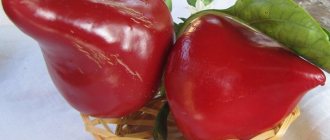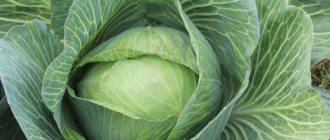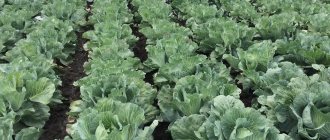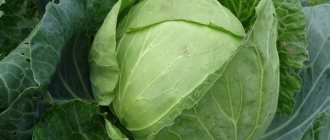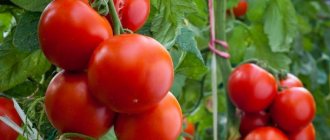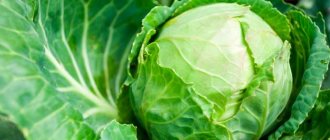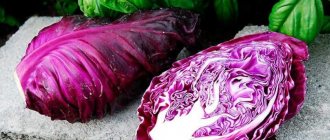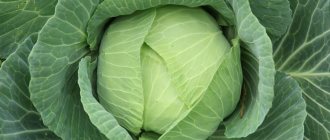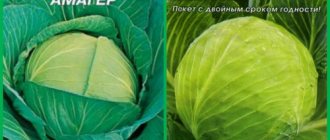Hurricane F1 cabbage was bred by breeders from Holland. The crop is distinguished by its long shelf life (until the new season), significant productivity, and excellent marketability.
| Landing location | Ripening time | View | Purpose | Origin | Maturation period | Weight |
| Open ground | Mid-late | White cabbage | Long-term storage, fermentation, cooking | Hybrid | 97-100 | 3-4,5 |
Characteristic
Hurricane cabbage is a white cabbage variety. This is a mid-season variety: it ripens in 97-100 days.
The weight of heads of cabbage with a miniature stalk after ripening is 3.5 kg. The maximum weight of cabbage heads is 5 kg. Productivity per 1 ha - 500 centners. Maximum yield: 850 centners per 1 ha. Accordingly, Hurricane cabbage is a high-yielding hybrid.
The shape of the heads of cabbage is round. The leaf plates tightly adjacent to each other are painted light green, sometimes there is a slight waxy coating. Veins are clearly visible on the leaf blades.
Advantages
Cabbage stores well
- resistant to some diseases that affect this vegetable crop. She practically does not suffer from fusarium wilt, which is the main enemy of vegetable crops.
- When there is overstaying in the garden, the heads of cabbage do not crack.
- Ripe cabbage heads have excellent taste. The purpose of the Hurricane F1 hybrid is universal. Crispy leaves are suitable for pickling and pickling, preparing fresh salads and culinary masterpieces.
- One of the main advantages of the hybrid is its long storage period. Healthy heads of cabbage without mechanical damage can be stored for about 7 months. It is worth mentioning here that the heads of cabbage do not lose their presentation during transportation.
Cultural information
The varietal hybrid Hurricane F1 is of Dutch origin. This is a mid-late type of white cabbage, recommended for fresh consumption and long-term storage. The heads of cabbage lie perfectly. The variety exhibits stable productivity. The purpose of the hybrid is to be a universal vegetable, suitable for salads, pickling and various dishes.
The word Hurricane is translated as hurricane. Dutch cabbage is very popular in Russia; it can grow in a greenhouse and open ground. Breeders have developed many varieties that have the same growing conditions as our climate. Feature - the culture needs a lot of light, which is easy to provide in an open space.
Hurricane Cabbage
From the variety of varieties, one can distinguish a classification according to the selection method: hybrids obtained by crossing varieties, and originals. The first variety is designated F1 and is characterized by the fact that the plant does not have viable seeds. You have to buy them for sowing every year. But they are resistant to diseases. Therefore, many farms are switching to hybrids. Next, we will get acquainted with the characteristics of this cabbage variety.
Features of cultivation
Despite the fact that Hurricane F1 cabbage is quite resistant to low temperatures and is intended for open ground, it is better to grow it in seedlings. Vegetables can be grown in open ground in the southern regions of the country. If spring frosts are expected, it is better to cover the plantings with film. When grown by seedlings, plants are planted in the ground in mid-May. By this time, the plants should have at least 4 leaves, and their height should vary from 15 to 20 cm.
This hybrid requires nutritious soil. Therefore, it is advisable to add organic fertilizers to the soil in the fall. We apply mineral fertilizers to the soil only if its composition is known. Garden crops do not grow well in soils with a high nitrogen content.
21 days after planting the seedlings in the ground, the plants need to be earthed up. We repeat this procedure after another 10 days.
Stronger plants have a powerful root system, which simplifies planting care. Cabbage needs to be watered in a timely manner, the soil should be loosened and weeds should be removed. The plant easily tolerates the lack of the required amount of moisture. But, with insufficient watering, heads of cabbage of medium and small sizes are formed, which negatively affects the yield.
How to properly plant cabbage seedlings
It is better to grow late varieties of cabbage in seedlings, especially in regions with a short warm period, where the heads of cabbage may not have time to ripen before the onset of frost. When planting cabbage seedlings, it should be taken into account that they are planted in a permanent place when the age of the seedlings is 30-35 days. Based on this and the climatic conditions of the growing region, the time for planting seed for seedlings is calculated. Since young plants do not have sufficient resistance to cold snaps, they should be planted in the ground when the likelihood of spring frosts is already low. Therefore, you can plant late cabbage seeds for seedlings from March to the end of April.
Planting cabbage seedlings later - video
Purchased seed material undergoes all preparation and disinfection before sale, so it is only soaked before sowing so that the seeds hatch faster. Seeds collected independently in the garden are processed as follows:
- in hot water – 1/3 hour;
- cold – 1 minute;
- 12 hours – in a solution with microelements;
- 24 hours - in the refrigerator.
To plant seeds, you can use purchased soil for vegetable plants or prepare it yourself at home. The composition of such soil should be as follows:
- 1 part river sand;
- 1 part garden soil;
- 1 part peat (or humus).
WHITE CABBAGE!• Krautman white cabbage F1• Atria cabbage F1• JUNE cabbageSuch a nutrient substrate must first be disinfected by heating in the oven at 180 degrees Celsius for 20 minutes or spilled with a weak solution of potassium permanganate. It is better to plant late cabbage seeds in separate containers so as not to injure young seedlings during the diving procedure. If this is not possible, then seed material should be planted in large containers at a distance of 2 cm from each other.
Characteristics and features of the variety
Harikain is a type of white cabbage. The variety undoubtedly exhibits resistance to cold, but if the climate is characterized by late frosts, it is better to grow seedlings indoors. Hurricane - late or mid-late cabbage. Its maturation lasts up to 100 days.
On a note. This classifies the vegetable as a mid-season variety. From germination to maturity it takes from 140 to 170 days.
The head of cabbage weighs 3.5 kg and has a small stalk. However, some specimens reach 5 kg. 500 centners are harvested from 1 hectare, the yield can reach 800 centners / ha, which makes it possible to classify cabbage as a high-yielding hybrid. Up to 8.7 kilograms are collected from one square meter.
Hurricane cabbage and description of the variety begins with appearance. The round shape of the head of cabbage includes light green leaf plates with a waxy coating and veins, densely spaced relative to each other. The ability to be stored for a long time, up to 7 months, is one of the main advantages over other varieties. The vegetable also tolerates transportation well.
The following parameters are noted:
- Raised rosette.
- A dense head of cabbage, round in shape, covered with outer leaves.
- The cut has a white tint.
- The outside color of cabbage is green or dark green.
- The waxy coating is average.
- Weight – from 2.5 to 4.5 kilograms.
- The taste characteristics are very high.
Agrotechnics of cultivation
The resistance of the Hurricane F1 hybrid to cold allows it to be sown in open ground. But it is still recommended to grow it using pre-prepared seedlings. Beds for sowing this cabbage are well suited if located in the southern regions. But if the climate is special - spring frosts, you need to take measures, for example, cover the plantings with film.
Seedlings prepared indoors are planted in the garden in mid-May. By that time, 4 leaves are formed, up to 20 cm high.
- Sowing is carried out from mid-March until the first days of April.
- The cotyledon phase is a period of picking, seating in separate containers.
- Mid-May – planting on the beds.
When sowing in the ground (as when planting seedlings), a geometry of 50 by 60 cm is observed. The soil must be nutritious, for which purpose organic fertilizers are added to the soil in the fall. Mineral types are not added unless the composition is known to require such an addition. The crop does not tolerate high nitrogen content in the soil. 3 weeks after transplanting the cabbage to the garden bed, hill up, repeating this after 10 days.
Care during the period when the seedlings become stronger is not so difficult due to the powerfully developed roots of the plant. The following actions are required:
- Timely watering, preferably in the evening. In sunny conditions, moisturizing is carried out at least once every 3 days, and in cloudy conditions - every 5 days.
- Loosening in the morning after watering.
- Removing weeds.
- Prevention against diseases. To prevent insect pests, repellent plants are planted nearby: marigolds, lavender, garlic.
If the soil is insufficiently moistened, nothing special will happen to the plant, since it tolerates such conditions. But the size of the heads of cabbage will decrease, which will worsen the yield indicators. From the first days of life, cabbage develops intensively. Private gardeners note a preference for growing seedlings, and also noticed the need to fertilize with calcium 3 times a season. Such a cabbage grows without undergoing necrosis and has an excellent presentation.
Landing
The vegetable is cultivated in seedlings and in rows (sown directly on the plot).
They start growing seedlings from the beginning of April.
To ensure that the seedlings are strong, the soil mixture is prepared from components such as garden turf, compost, lowland peat and ash.
The seeds are planted 1 cm deep and sprinkled with a finely dispersed mixture on top. Cover the containers with glass or film and keep warm (20 degrees) until the loops sprout.
What are the rules for caring for seedlings:
| Procedures | Peculiarities |
| Watering | Use settled liquid at room temperature |
| Feeding | You will need a nitrogen mixture (nitrophoska), complex compounds (Ecosila, Rostmoment) |
| Picking | Carried out in the cotyledon phase. Seedlings are transplanted into cups, pots (diameter at least 10 cm) |
| Hardening | Duration 7-10 days Night temperature 5-6 degrees, daytime 10-11 degrees |
In 40-48 days, the bushes are transplanted to a permanent location. In the fall, the following is added per 1 m2 to the beds:
- a bucket of rotted compost;
- 40 g phosphorus-potassium supplement;
- 100 g of ash.
Advantages and disadvantages of the variety
The good properties of cabbage can be represented as the following list:
- Good preservation of the crop.
- Resistance to a number of cabbage diseases. For example, Fusarium wilt does not threaten the crop.
- The head of cabbage does not crack in the garden.
- Great taste.
Note! The disadvantage is late ripening. During harvest, frosts have already begun in some areas. The seeds of the hybrid need to be purchased again, since the plant does not produce them in a form suitable for sowing and germination.
According to reviews from gardeners, the properties of the Harriken cabbage variety are such that they are happy to plant it again. For example, it has been present on the Belarusian market for a long time, having proven itself well. This is a medium hybrid that can be stored for approximately 5 months, until February. Private gardeners note resistance to the thrips pest. Kachan, with an average weight of 3 to 4 kg, is a must-have on the market, as the hybrid variety is distinguished by its rare quality.
Diseases and pests
The white cabbage variety Rinda is quite resistant to common diseases and pests that affect the crop. However, for the purpose of prevention, the implementation of the necessary procedures will not have a negative effect, but will only increase the yield and quality of the product.
Table: measures for the prevention and control of cabbage diseases
| Name of the disease | Nature of the lesion | Processing period | Fighting methods | Prevention measures |
| Blackleg | It affects the stem and root stalk in the form of black rot. Leads to a lag in plant growth and development, even to the point of death. | Before and after planting, as well as in case of detection of signs of disease. |
|
|
| Downy mildew (peronospora) | It affects young plants in the form of large gray or brown actively spreading spots. Damaged leaves curl and dry out, which in the future leads to a slowdown in the growth process and death of cabbage. | When the first signs of the disease appear. | Spraying with a 1% solution of Bordeaux mixture at the rate of 500 ml/1 bucket of water and 250 ml/1 bucket of water for treating seedlings. | Maintaining an optimal level of soil moisture, avoiding stagnation of water, leading to disease. |
| Kila | Develops in the root system. It appears in the form of white growths that prevent the penetration of nutrients and lead to the death of the crop. | Before disembarkation and in case of detection of illness. | Timely recognition of diseased roots at the seedling stage. Affected seedlings are dug up along with a clod of earth and destroyed. |
|
Video: clubroot - a dangerous disease for cabbage
https://youtube.com/watch?v=bff_OO7-KtQ
| Pest name | Description and nature of the lesion | Processing period | Fighting methods | Prevention measures |
| cabbage aphid | Aphids suck juices and nutrients from leaves, causing them to curl and dry out. When the pest appears en masse, the leaves become discolored and sometimes acquire a blue-pink tint. | When a pest is detected. | Treatment of plants with a solution of laundry soap (40 g/10 l of water) using a rag, as well as spraying with tinctures of tobacco, potato and tomato tops. |
|
| Cruciferous flea beetle | It damages young seedlings by gnawing holes in the leaves, which leads to drying out and death of the sprouts. | Pollination with a mixture of ash and tobacco in a ratio of 1:1 (30 g per 1 sq. m). | Regular weeding, removal and destruction of weeds. | |
| Cabbage leaf beetle | Beetles damage the leaves, sucking out all the nutrients from them, which leads to drying and death of the plant. |
Cabbage is processed in the morning before sunrise. | Regular weeding and burning of weeds. |
Benefits of Dutch Vegetable
Both farmers and amateur vegetable growers prefer to buy cabbage hybrid seeds brought from Holland. And the choice here is not accidental, because vegetable seeds are characterized by:
- compliance with the declared variety;
- high taste of cabbage;
- excellent hybrid yield;
- different dates for harvesting heads of cabbage;
- cabbage is unpretentious in care;
- plant resistance to disease;
- no genetic modification.
The advantages of hybrids include the fact that forks of Dutch varieties have an excellent presentation, are preserved for a long time, and tolerate transportation well.
The best early ripening hybrid
No one has ever seen a shorter growing season than Parel F1 cabbage. After just fifty days, bright green heads of cabbage are formed. And they are all as if chosen - with even round heads that ripen at the same time. Their weight is average - from eight hundred grams to one and a half kilograms. The dense structure of the forks with short stalks allows you to prepare various vegetable dishes with a minimum of waste. Cabbage tastes juicy and sweet. The leaves are suitable for summer salads and for processing.
Ultra-early cabbage also includes Mirror F1 cabbage, intended for fresh use. Dark green forks, yellowish in cross section, reach a weight of one to one and a half kilograms. Heads of medium density can be obtained after 45-50 days.
Cabbage Kevin F1 bears fruit in medium-density green heads, weighing up to one and a half kilograms. The excellent taste of the vegetable makes it possible to use it fresh, starting from the end of June.
Vegetable crops are characterized by increased protection against diseases. Cabbage grows well both in open ground and in greenhouses. Even after the forks have matured, they can be left on the beds - they will not crack or rot for two weeks. Reviews from vegetable growers about early varieties are only positive. The excellent presentation of cabbage allows the vegetable to be quickly sold, and its excellent taste gives priority to early hybrids over other garden plants.
Productive variety of cabbage
Ultra-early varieties also include vegetables such as Tiara F1 cabbage. In addition, the characteristics of garden crops are only the highest:
- The succulent leaves of the variety form heads 59 days after planting.
- Dark green forks are suitable for fresh use, stewing, and pickling for the winter.
- The weight of one cabbage head can reach two kilograms.
- The evenness of the heads of cabbage and the absence of hangers makes it possible to quickly sell vegetable products.
- The hybrid is intended for planting in greenhouses, greenhouses, and in the southern regions - in open ground.
Large forks of cabbage, according to gardeners, are valued for their pleasant taste, without any bitterness. Summer dishes and salads are prepared from them. Cabbage rolls and bigus are especially tasty from the leaves of the plant.
Care instructions
Regular watering is important for the Tobia variety.
It is important to constantly regulate the water supply to the soil. The watering interval should be about 3-4 days. At least 3 liters of warm water should be poured under each bush
This volume allows the roots to form better. As soon as the seedlings reach the age when inflorescences begin to form, the volume of water supplied should be increased to 6 liters. It is important to remove weeds and loosen the soil. The weeding depth should be 5-7 cm. This allows you to remove the top crust from the ground and supply nutrients and oxygen to the soil
At least 3 liters of warm water should be poured under each bush. This volume allows the roots to form better. As soon as the seedlings reach the age when inflorescences begin to form, the volume of water supplied should be increased to 6 liters
It is important to remove weeds and loosen the soil. Weeding depth should be 5-7 cm
This allows you to remove the top crust from the ground and supply nutrients and oxygen to the soil.
Feeding is carried out in several stages:
- The first, 12-15 days after planting in open ground, should be carried out using chicken droppings. About 500 g of the substance is added to each plant.
- The second one is 10 days after the first one. At this point, mullein is used in the amount of 400 g per plant.
- The third is at the moment the fruit begins to form. At this point, it is recommended to add about 200 g of wood ash to each plant.
The exclusion of mineral components is not accidental: if you use only organic fertilizers, the products will be more environmentally friendly.
The best variety from Holland
Farao F1 cabbage also ripens quickly - 63 days after planting the seedlings. Bright green dense plugs grow up to three kilograms in weight. This means that one fruit can feed a large family. You can get high vegetable yields in a greenhouse or under a non-woven covering material. The plant’s unpretentiousness to growing conditions is noted. It is not afraid of drought and easily tolerates sudden temperature changes. For vegetable crops, timely watering and fertilizing are important. Even when forming into heads, the vegetable can retain its presentation in the beds for ten days without cracking.
The most popular hybrid
Many summer residents know about Bronco F1 cabbage. The variety has been grown in areas of various regions for more than twenty years. It gained popularity for a reason. The description of the vegetable includes that it:
- refers to mid-season hybrids;
- tolerates heat easily;
- bears fruit with dense heads with a snow-white structure;
- has round heads of cabbage weighing up to a kilogram or more;
- does not succumb to diseases or weather disasters.
A feature of the variety is its high yield in any climatic region.
Mid-late vegetable varieties
Hurricane F1 cabbage is a high-yielding hybrid. Forks weighing from two to three kilograms are collected from one square meter 140-170 days after the appearance of the first shoots. From one hectare you can harvest up to 330-635 centners of vegetables. The variety has excellent keeping quality and excellent taste. The plant is unpretentious in care, produces dense, round heads of cabbage, covered with green waxy leaves, whitish when cut.
Ammon F1 cabbage reaches full maturity 125-135 days after planting. It is usually put away for storage in October. Large heads of cabbage weighing from four to six kilograms are stored fresh for a long time. They can be used for fermentation, they are easy to clean after storage, and do not crack. The variety is resistant to fusarium and thrips.
Mid-late cabbage Larsia F1 will produce small heads weighing from two kilograms 120-140 days after germination. It is best to grow the hybrid through seedlings, planting the seeds in March. The vegetable bears fruit well in open ground, producing dense, rounded heads of cabbage with a short stalk. The leaves on the heads are grey-green on top and white when cut. The vegetable is intended for fresh consumption and processing for the winter.
Adaptor F1 cabbage has good taste and marketable yield. It has a medium-sized leaf, slightly wavy along the edge, with a waxy coating of medium intensity. Gray-green above, whitish when cut. Dense vegetable heads, having reached ripeness, weigh from 1.8 kilograms to two. The hybrid is preserved perfectly and does not crack. The taste is juicy, sweetish.
Ankoma F1 cabbage has a technical ripening period of 120 to 135 days. Vegetable seeds sown in March-April sprout vigorously and are ready for planting in open ground in 35-45 days. All summer you can harvest dark green round-shaped heads of cabbage weighing from two to four kilograms. The vegetable is intended for fresh consumption, freezing, and pickling.
Summer residents have known about Krautman cabbage for a long time. They value the mid-season variety for its high yield, from 300 to 900 centners per hectare, and excellent taste. Juicy sweet forks are suitable for pickling. And the heads can be kept fresh until March in a cool room.
Cabbage Jubilee F1 reaches full maturity 120-140 days after planting the seeds. Perfectly aligned heads with excellent internal structure are resistant to cracking. The weight of the dense gray-green heads can be over two kilograms. The yield of the vegetable is high - it can produce from one square meter - nine kilograms of delicious juicy forks.
The Dutch selection of cabbage was appreciated by those who grow the vegetable in their gardens for personal needs, in the field for sale through retail outlets.
Sources:
https://fermoved.ru/kapusta/harrikejn-opisanie.html https://7ogorod.ru/kapustnye/harrikejn.html https://dachamechty.ru/kapusta/gollandskaya.html
Portal about construction
Among the wide variety of varieties, Rinda cabbage, the description of which is discussed in the article, belongs to a special category. It is most often chosen by amateur gardeners and commercial enterprises for its excellent taste, high yield and unpretentiousness in the growing process. The full name of the variety is Rinda F1. It is a hybrid bred abroad. Manufacturer: Dutch agricultural company Monsanto. Rinda F1 cabbage was included in the state register of the Russian Federation in 1993. The product is popular not only in Russia, but throughout the world.
Short description
Being a mid-season variety of white cabbage, Rinda F1 has unique properties. It is perfect for fresh consumption, as well as for preparing for the winter and storing for several months.
Typically, mature cabbage weighs about 3-6 kg, but there is evidence that experienced gardeners were able to grow specimens weighing up to 10 kg. The heads of cabbage are spherical in shape and very dense. They have a beautiful internal structure. When cut, the color is yellow-white. Able to survive on the root for a long time. The outer stalk is short. The leaves are thin and at the same time elastic, with thin veins. They have a light green color. A distinctive feature is its delicate and juicy taste. The hybrid has a compact rosette and average spreading. Leaves are semi-raised. They are an excellent material for preparing cabbage rolls and other dishes.
Advantages of a hybrid
The variety is characterized by high productivity. From 1 sq. m you can collect up to 10 kg of product. The ripening of heads of cabbage is friendly. This simplifies the process of collecting them and makes it possible to prepare the product in a short time. The vegetable is unpretentious to climatic conditions and soil conditions. Calmly tolerates temperature changes. Resistant to various diseases and pests, as well as browning of the leaf edges. Can be stored for up to 4 months. If the temperature and humidity conditions are observed, it will last until April. The taste of this variety is excellent. The product tolerates transportation well. Even when fully ripe, the heads of cabbage do not crack.
When describing Rinda F1 cabbage, it is important to note that it has an attractive appearance. Therefore, it is popular among consumers and sells well in the market.
The leaves are very sweet, which makes it possible to use the product for preparing various dishes. Salads, stewed or sauerkraut turn out excellent.
Flaws
Rinda is a moisture-loving variety and is not at all resistant to prolonged drought. When choosing a place for planting, you need to exclude low-lying areas where moisture will stagnate. You should also avoid high places, otherwise there will not be enough water. Rinda F1 cabbage has increased requirements for sunlight. Shaded areas lead to lower yields. The place should be ventilated and open.
Growing and care
The Rinda variety is grown in various climatic conditions. Sowing of seeds occurs in mid to late March. When 40 days have passed after the first shoots, you can transfer the plant to open ground. Planting is scheduled for the end of April. It will take approximately 90 days from the moment the seedlings are transferred to open ground until they are fully ripened. For 10 sq. m it is recommended to plant no more than 40 pcs. plants. Excessive thickening will lead to a decrease in yield. The planting pattern should be 35x50 cm.
Late-ripening hybrid Kolobok F1
Connoisseurs of the qualities of white cabbage Rinda F1 may also like the magnificent late-ripening hybrid Kolobok F1.
The plant will develop well only if it is properly cared for. Watering, hilling and loosening the soil are necessary components. And to protect cabbage from pests, you can use wood ash and a solution of acetic acid. In order for the heads of cabbage to be juicy and strong, it is necessary to fertilize several times. Basically, Rinda F1 cabbage needs nitrogen fertilizers.

